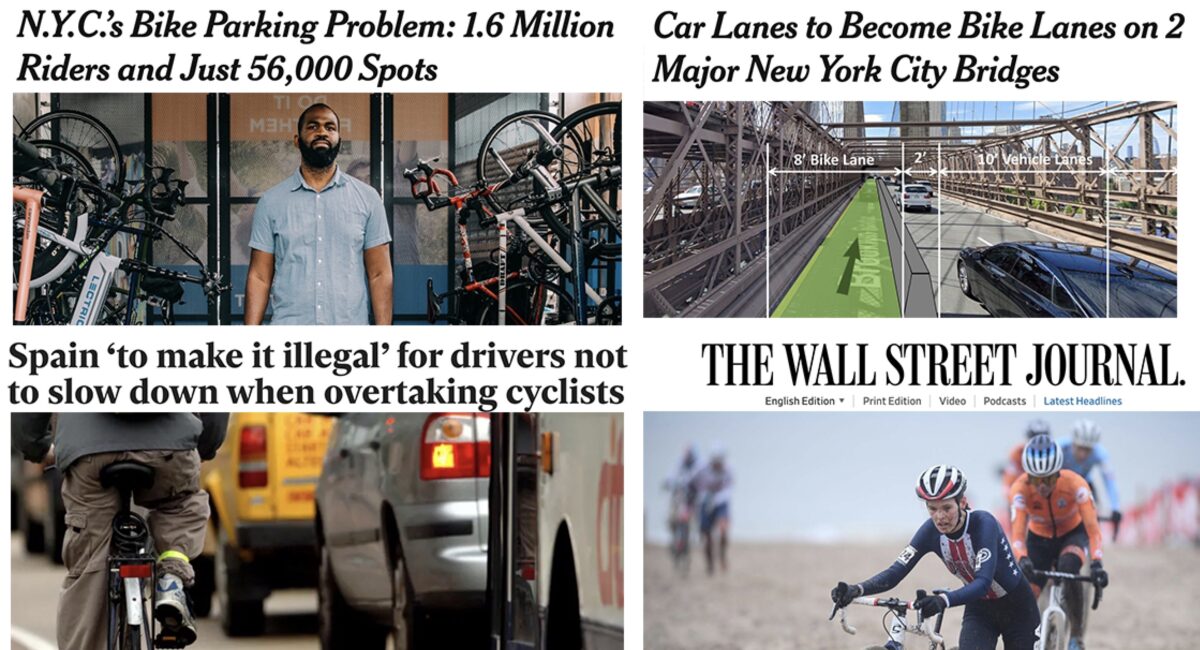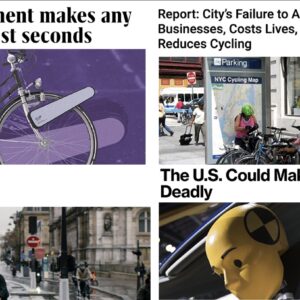Welcome to the week.
Here are the most notable items we (as in, myself and our helpful community of readers!) came across in the past seven days…
Bridges for the People: In a major triumph for NYC bike activists, Mayor Bill de Blasio announced plans to create a protected lane for bicycling on the iconic Brooklyn Bridge. Your move Portland.
Honsinger’s finale: Southern Oregon and Portland resident Clara Honsinger, who rode from Sellwood Cycle Repair last year, capped a brilliant season on the World Cup cyclocross circuit with a strong 4th place finish at the World Championships. Her ascent to the top of American cycling continues with a big feature in the Wall Street Journal.
Parking gets its due: The NY Times highlights NYC’s lack of bike parking with a spotlight on an entrepreneur who has a promising solution.
The truth about Escalades: Latest The War on Cars episode features an automotive journalist who actually dared to tell the truth about a behemoth Cadillac SUV.
Advertisement
More parking, more driving: A “breakthrough” research paper shows a direct correlation between the amount of car parking spaces and the number of people who will buy (and use) a car to fill them. And that’s only one of the important takeaways.
More room to pass: Transportation officials in Spain want to amend existing safe passing laws to require drivers to slow way down when passing bicycle riders.
Buttigieg tracker: If you aren’t paying close attention to US DOT Sec. Pete Buttigieg, you should be. Here’s a great post from T4A that will bring you up to speed.
Cool Site of the Week: BikeMaps.org looks like a very promising tool that allows anyone to share a close-call or collision. Developed in Canada, there are only a few entries from the Portland area. We’ll be keeping an eye on this as it looks to be a solid step up from BikePortland’s now defunct B-SMART map.
— Jonathan Maus: (503) 706-8804, @jonathan_maus on Twitter and jonathan@bikeportland.org
— Get our headlines delivered to your inbox.
— Support this independent community media outlet with a one-time contribution or monthly subscription.








Thanks for reading.
BikePortland has served this community with independent community journalism since 2005. We rely on subscriptions from readers like you to survive. Your financial support is vital in keeping this valuable resource alive and well.
Please subscribe today to strengthen and expand our work.
That cyclocross track in Ostend was intense with all that beach sand. I can’t even imagine it. WTG Ms Honsinger for a great season! I hope more fans can see her in the years to come.
“When you’re measuring greenhouse emissions per person within a country, density is all but destiny”
USAnian cities with increased production of class A luxury apartments typically see net increases in GHG emissions due to displacement of people who use the least CO2e*. Given that Mr. Anderson is an employee of a real-estate-industry-funded firm that lobbies for development of class A housing, it’s no surprise that they would make these kinds of claims (without associated evidence or citation).
Rice, J. L., Cohen, D. A., Long, J., & Jurjevich, J. R. (2019). Contradictions of the Climate-Friendly City: New Perspectives on Eco-Gentrification and Housing Justice. International Journal of Urban and Regional Research. doi:10.1111/1468-2427.12740
See also:
kleinmanenergy[dot]upenn[dot]edu/research/publications/follow-the-carbon-the-case-for-neighborhood-level-carbon-footprints/
*Forcing people who consume the least CO2e to the car-centric outer-urban areas outweighs the small GHG reduction associated with modest increases in density.